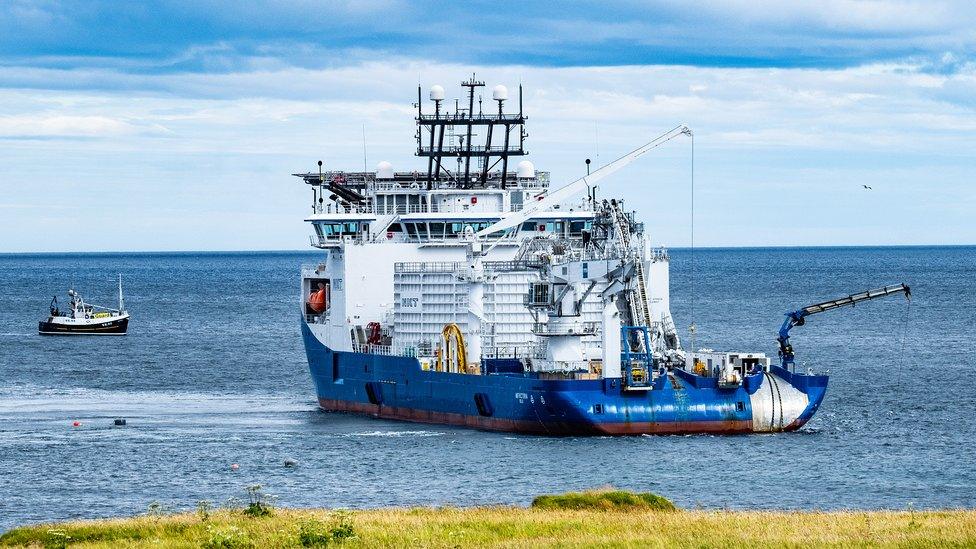Undersea cable laid to link Shetland to UK energy grid
- Published

The NKT Victoria began laying the subsea cable near Caithness
The first undersea cable is being laid to connect Shetland to the UK mainland's energy system.
The Shetland High-Voltage Direct Current (HVDC) link began this week off the coast of Caithness.
The £660m project will allow Shetland to export renewable electricity to the grid and give the islands security over their electricity supply.
The project has three separate cable-laying efforts. The 260km seabed link is due to be completed in 2023.
Specialist ship NKT Victoria is expected to complete the first 100km of cable by mid-July.
It will connect to the mainland at Noss Head near Wick.
Boulders were cleared from the proposed route along the seabed in preparation.
Once the cable is in place, it will be trenched into position using the construction support vessel, Grand Canyon III.
It has a subsea jet trencher to ensure the cable is buried at the correct depth.
SSEN Transmission's lead project manager Chris Finnigan said: "The installation of the subsea cable is one of the major components of the Shetland HVDC link project.
"We look forward to the completion of this first subsea cable campaign over the coming weeks."